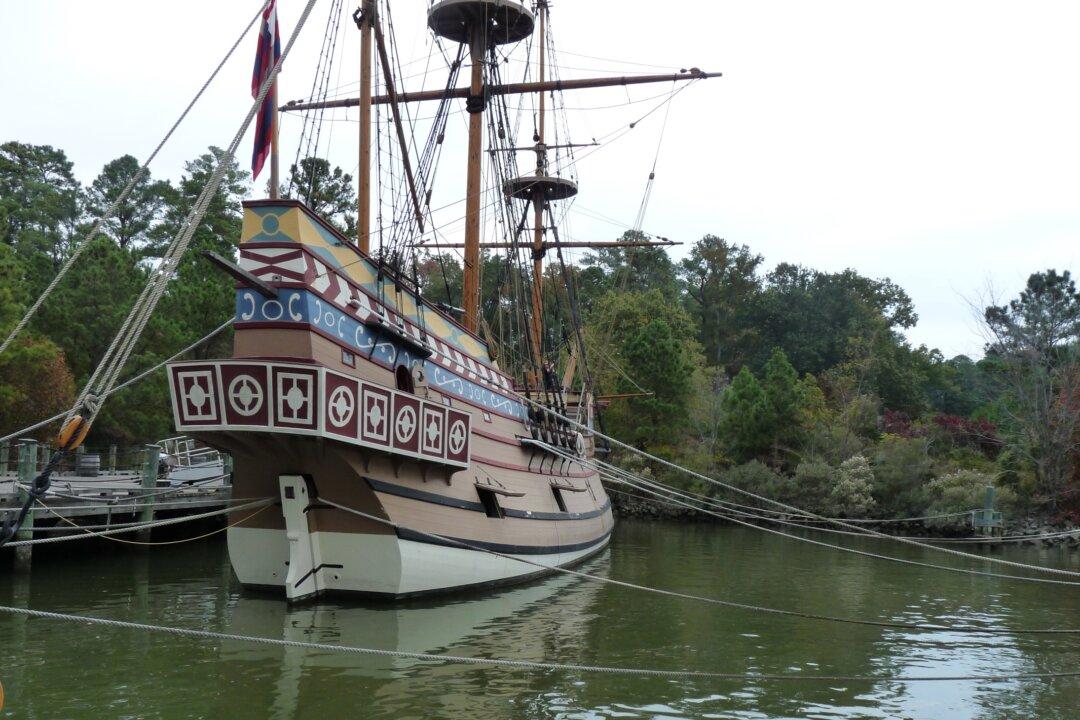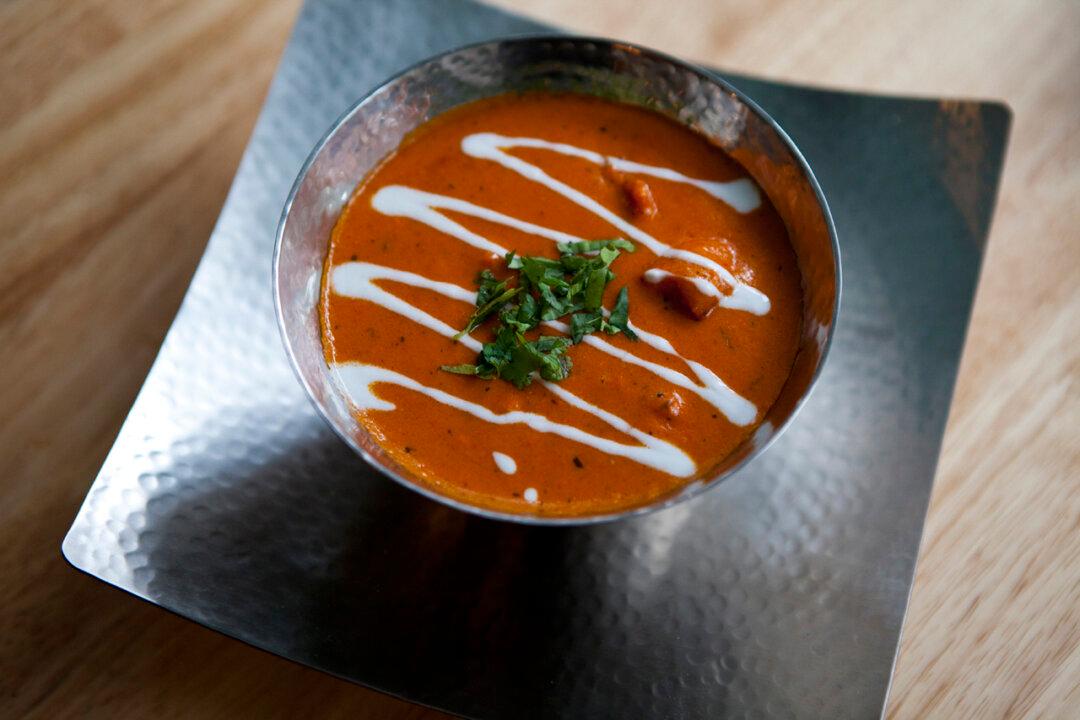As I stood there somewhat underwhelmed, it was hard to believe that from these modest beginnings a nation would grow to lead the world in innovation, culture, and freedom. There was, after all, just an altar of stone, a rebuilt church, and a small cemetery.
There were also some archeological sites beginning to reveal how this area existed 400 years ago, and the harshness of life for those early settlers. I was standing at the place of the first permanent settlement of the Americas, then known as “James Fort,” later changed to “Jamestown Settlement.”
Early Settlers’ Adversity
It all started in December 1606, when 105 people—mostly investors—boarded three vessels under the charter granted by King James I of England to the Virginia Company of London. The ships; The Susan Constant, Godspeed, and Discovery were placed under the care and leadership of Captain John Smith. Six months later, on May 13, 1607, with one less person, they arrived and settled on this peninsula off the Atlantic Ocean, which they named for their King.
They presumed it was a safe place to settle, for it had deep waters and was surrounded by the York and James Rivers to the north and south, and the Chesapeake Bay to the east—a seemingly good place to build their fortress. They also thought that it was uninhabited by the local native tribes.
To their dismay, a lot of things went wrong. The area turned out to be a swamp with brackish tidal river water. It also was not a prime place to plant, and the natives inhabited the land, after all.
Adversity and bitter hardship ensued—they faced starvation, a plague, and attacks by the Powhatan Confederacy, which comprised of a representative body of 32 local tribes.
By the winter of 1609–1610, they hit rock bottom. Just as they were about to give up and abandon the island, reinforcements of food and people arrived led by Lord De La Warr (for which the Delaware River and State are named). That is when Reverend James Hunt gave a special ceremonial service of thanksgiving for the safe arrivals. Chills went through my spine as Jeff, my knowledgeable and passionate guide and historian, told this story.
Captain John Smith, the founder of Jamestown, described the remaining 104 men and boys as “The First Planters” of the colony. They were gentlemen, laborers, four carpenters, a blacksmith, a sailor, a barber, a bricklayer, a mason, a tailor, a drummer, a surgeon, and four boys.
At Jamestown, people from different continents and cultures created a new society. Virginia Native Americans lived here in a land they called Tsenacomoco; English Colonists crossed the Atlantic in search of wealth and a better life; and Africans were forcibly brought here to labor.
From these meager beginnings wrought with grim and harrowing challenges, Jamestown Settlement grew to become an American national symbol. It was Virginia’s capital for the first 93 years (1607–1699), and is recognized as the cradle of the American nation.
The Historic Triangle and Time Travel
In 1699, the capital would move from Jamestown Settlement, 10 miles inland, to Williamsburg. These two early settlements, along with Yorktown, comprise the Historic Triangle of colonial Virginia connected by the scenic 23-mile Colonial Parkway. The area is a reservoir of beauty, history, and culture.
Although fascinated with Jamestown, I was happy to leave this post to visit the Jamestown Settlement Museum in Williamsburg, which was built in 2007 to commemorate the 400th anniversary. The galleries feature the Powhatan, African, and English cultures before and after they made contact with each other.
There are exhibits about the African slave trade, the warfare between the Powhatan and English, and then the evolution of technology that came about as the warring factions learned from each other. I was fascinated by the comparisons of their tools and methods used for everything from grinding corn to cutting trees. I also enjoyed the collection of 16th and 17th century navigation tools and armor.
Next I found myself fall into the tunnel of time as I walked into a completely reenacted outdoor Powhatan Village. I talked with interpreters dressed in full garb according to those times, enacting those moments with passion and great knowledge.
Was I dreaming? It was surreal. I was experiencing history-live!
Regardless, I was so happy, as I’ve always wanted to learn more about Native Americans’ way of life. I had been to museums, but nothing as vivid and real as this. There, I learned how they made their canoes, what kind of cooking utensils they used, and the fascinating and very practical structure of their tents.
Then there was the Colonist’s fort where I saw cannons displayed and blacksmiths at work. A few steps further, and I was at the waterfront experiencing three true-to-scale ships with the captain, cook, and other ship-workers on board. I needed the entire day to absorb the experience.
Next, I moved on to Williamsburg of the 1700s, which is also known as Historical Williamsburg, the Revolutionary City. Along with Yorktown, both are living history interpretive sites, meaning visitors experience history by speaking and interacting with reenactors.
Williamsburg is the oldest and largest interactive history experience. Its painstaking restoration began in 1926 when Reverend Dr. W.A.R. Goodwin and philanthropist John D. Rockefeller Jr. sought to preserve the founding settlements of the nation for future generations.
My impression was that Williamsburg does not reveal itself at first glance. There are gardens, farms with animals, little shops, and pubs. At a closer look, I experienced the character of the people and the places exactly as they were at specific times in history. Heroic facts of war, or the more mundane social and business happenings of the day are perfectly reenacted in character by the dedicated and hard-working guides.
I thought how history comes in faces, places, and phases, and I found myself enveloped with those moments and resigned to how things were back in Colonial times. I saw the Governor’s Palace, the taverns, the tailor shop where all the garments were made, and the coffee shop exactly as they were. Some are originals and others rebuilt according to the original footprints.
I wished I had more time there. At least three full days may be just enough to explore the entire area and the activities that take place on a daily basis. I was drawn to the authentic tavern, where I learned the origin of the expression “sleep tight and don’t let the bed bugs bite.”
It was in this city where the nation’s leaders—Thomas Jefferson, Patrick Henry, and others—conceived the ideals of liberty, independence, and personal freedom.
The coffee shop, an elegant place, was a treat for me as I discovered that it was historically a place were only the gentry frequented even though they may have had to travel from several hundred miles away. They came for legislative sessions and court cases, and merchants came to discuss their matters.
“These are the type of people who gathered at the coffee houses—Gentlemen customers— there is no room for ordinary customers. The room has to be booked in advance,” my interpreter explained.
I found that Williamsburg was where I wanted to linger most and enjoy every moment, but I hurried to my next stop in history to experience the Yorktown Victory Center. The town itself is quaint and very small. Here I was an eyewitness to the Revolutionary period leading to the American victory for independence from British rule at Yorktown in 1781.
I also explored the Continental Army Encampment and watched the interpreters work on a re-created 1780 farm. Their chores included folding tobacco leaves, manning the kitchen, and taking care of other mundane chores. While standing in the primitive kitchen filled with pottery and dried vegetables and herbs, my guide explained, “The kitchen was not for cooking only, it was used mostly for preserving food.”
Not breaking character, he went on to say that, “The Indians taught us to survive and to understand this land.”
There are many places to dine in Williamsburg. Some restaurants offer period food with servers outfitted in costume to give the authentic tavern experience. Christiana Campbell’s Tavern offers seafood; King’s Arms Tavern serves beef and game. There is R. Charlton’s Coffee House, Shields Tavern—all in the far end of the historic area. That evening I was invited to dine by the sea at James Landing Grill, a cozy place with friendly servers.
There are also a variety of accommodations in the area, such as the charming bed and breakfast, The Williamsburg Inn, which offers a quaint, intimate setting.
My only regret with my visit to the historic Virginia area was coming a few weeks too early to enjoy Christmas Town in Williamsburg. My local guides told me that the town transforms into a magical and merry city, all performed in character by colonial reenactors. Also at the nearby Busch Gardens is a Christmas town, which is themed after five European countries—Sweden, Germany, France, Italy, and England. These festivities run until December 30.
Virginia Wine Country
After a packed agenda of historical tourism, it was time to slow down and unwind at what felt like a European Estate at Wedmore Place, a luxury boutique hotel at the Williamsburg Winery. I knew Virginia was renowned for its tobacco and cotton production, though I was surprised to learn that it’s the fifth largest wine producing state in the United States.
The winery is nestled on 300 acres of green space and the hotel is comprised of 28 uniquely designed rooms and suites, each named for a different European province. They are furnished complete with wood-burning fireplaces, antiques, and paintings that reflect the culture and history of each room’s namesake; such as the Tuscany, the Scandinavia, and the Wales. It was a truly luxurious and immersive experience of pampering, and I didn’t want to leave!
I had dinner onsite at Cafe Provencal, where I enjoyed a classic French meal prepared by Chef Ika Zaken, an Israeli from Belgium who I had the pleasure of meeting. There are many nice selections of wines, but the Ardagio grown in the restaurant’s backyard with the filet mignon is a wonderful pairing. The next morning I awoke from my dream to the smell of freshly baked breads and croissants. I wish I had more time to enjoy the nearby golf courses and biking trails.
Recharging in luxury at Virginia’s wine country was the perfect way to re-emerge from my time travel to the birthplace and early days of Colonial America. Then it was time for the short trip back to the future, to my home and present-day reality in New York. However, by experiencing life as America’s forefathers did, I feel as though I have a new lens on the present.
For more information:
colonialwilliamsburg.com
historyisfun.org
williamsburgwinery.com




